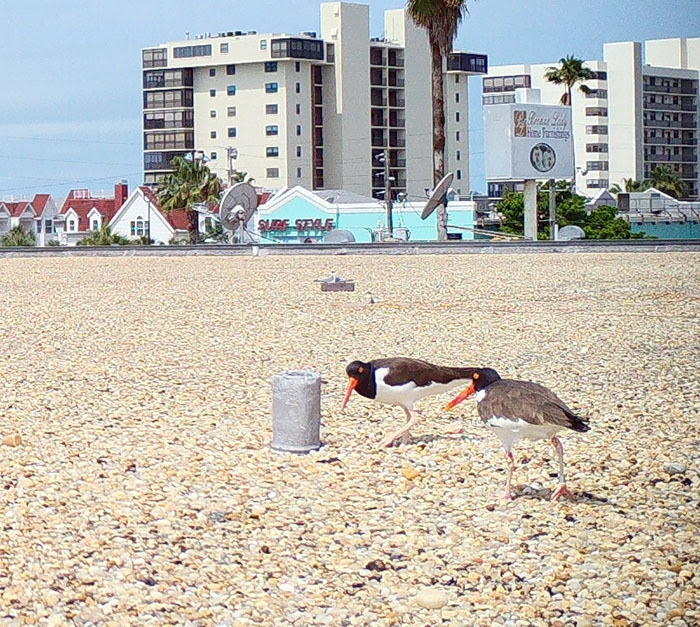Building owners provide rooftop-nesting habitat for shorebirds
Florida Fish and Wildlife Conservation Commission (FWC)
Shorebirds and seabirds typically nest directly on beaches along Florida’s coasts, but as shorelines get busier, species such as black skimmers, least terns, roseate terns and American oystercatchers increasingly use gravel rooftops to nest and raise chicks.
Shorebird and seabird nesting season takes place in Florida between February 15 and September 1 – varying by region and county. Most rooftop nesting occurs between April and September, but rooftop nesting can begin as early as February for American oystercatchers in some regions. Building rooftops provide important alternative nesting habitat for shorebirds and seabirds, as most species nesting on rooftops are imperiled. Approximately 50% of Florida’s least tern population relies upon rooftops for nesting.
Building owners and managers are key to the success of shorebirds nesting on rooftops. If you own or manage a building where shorebirds or seabirds are nesting on the roof, you can help with nesting success by giving the nesting birds space and coordinating with your FWC Regional Shorebird Biologist. To find a regional shorebird biologist near you, visit MyFWC.com/conservation/you-conserve/wildlife/shorebirds/contacts.
For buildings that have shorebirds nesting on rooftops, it is recommended that routine maintenance and nonemergency repairs be conducted outside of shorebird nesting season, between September and February. If unexpected repairs are required during the nesting season, building owners can work with FWC regional shorebird biologists to determine if take could occur and how to apply if a permit is needed.
You can help with nesting success, even if you don’t own or manage a building where shorebirds or seabirds are nesting:
• If you are staying at a hotel or visiting a business that has rooftop nesting birds, thank management and staff for supporting shorebird and seabird conservation.
• Become a Qualified Rooftop Monitor. For details, visit
myfwc.com/license/wildlife/ibnb/rooftop.
• When on the beach, do the flock walk — keep at least 300 feet from nesting birds and walk around flocks of birds and stay out of posted areas. Getting too close to nesting shorebirds, seabirds and wading birds can cause them to flush from their breeding sites, leaving vulnerable eggs and chicks exposed to the elements and predators.
• Keep pets at home. Even well-behaved dogs can frighten shorebirds, causing them to abandon their eggs and chicks. If you bring your dog with you to the shore, go to a beach where they’re allowed and follow all leash laws.
• Properly stash all trash. Trash and food scraps attract predators, such as raccoons and crows, that prey on shorebird eggs and chicks. Litter on beaches and in the water can entangle birds, turtles and other wildlife. Beachgoers can help beach-nesting birds and other native wildlife by properly disposing of all trash, filling in man-made holes in the sand, and removing all personal gear from the beach before sunset. Fishing line can be deadly to waterbirds, sea turtles and other wildlife, so be sure to dispose of it properly. To find a monofilament recycling station near you, visit mrrp.myfwc.com.
• Look for closures of Critical Wildlife Area (CWA). Be on the lookout for signs designating Critical Wildlife Areas on the beach or coastal islands – these areas are closed to public access to protect high concentrations of wading birds and shorebirds while they nest and raise their chicks. Boaters and beachgoers can help nesting birds by keeping distance and noise volumes low near Critical Wildlife Areas.
For more information, visit myfwc.com/conservation/you-conserve/wildlife/shorebirds/rooftop.
Spring is an active time for many of Florida’s wildlife species. For more information on wildlife in Spring, visit myfwc.com/news/spring-news.
